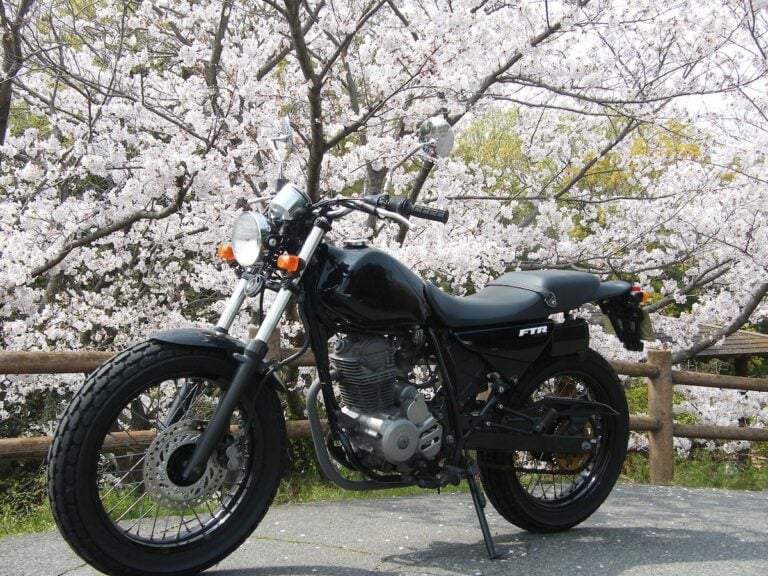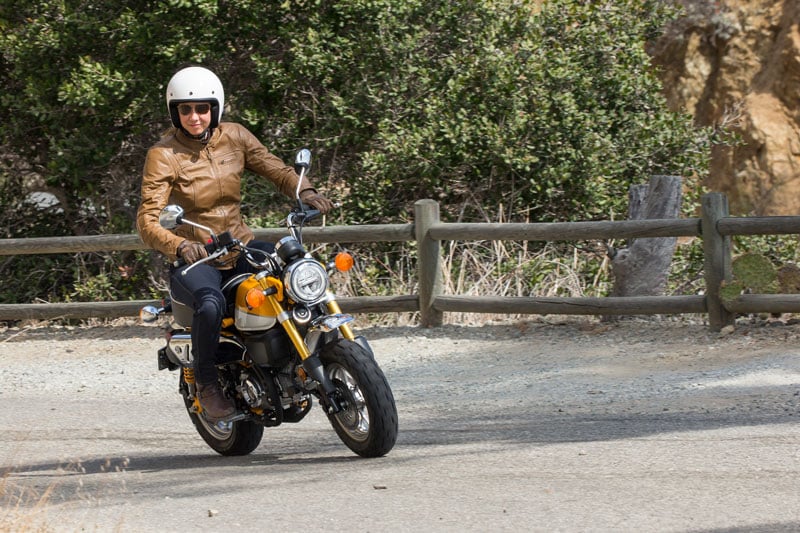
Let me start with a story. Last year, I travelled to Vietnam to take on the famous Ha Giang loop, touted as one of the world’s greatest motorbike adventures. I’d ridden a 250cc off-road bike in Japan for six months, and was very impressed, but from what I’d read on the internet I was convinced that Vietnam would outdo Japan in every aspect. But, to my surprise, it was not as easy as that for Vietnam. While the views were breathtaking, and the roads being poorly maintained made the whole thing a challenge, I returned to Japan with a sense of pride and content that I live in one of the best places in the world for motorbike adventures.
Living in Nagasaki, I’m fortunate enough to have access to numerous scenic routes for my rides. Coastal roads, mountain ranges, and hot spring towns are only a few hours away. On my first long ride, I went around the Shimabara Hanto peninsula area, where I drove through tunnels carved into mountains, with an active volcano on one side and the vast expanse of the ocean on the other. It was nothing short of a dream.
Another memorable ride was when I took my trusty steed to Amakusa, where I spent the day exploring the Kumamoto Island, visiting temples, a castle, and even a famous rock shaped like a boob, called oppai iwa. To top off the day, I saw hammerhead sharks during my ferry ride back. It was a stark contrast from my life in London.
These are only two of the many rides I’ve experienced in Japan, and I can confidently say that motorbike riding here is nothing short of spectacular.
The country’s top-notch infrastructure and drivers’ familiarity with sharing the road with motorbikes make it a safe and enjoyable place to ride. And while Japan is often known for its bustling cities and high-tech advancements, its natural landscapes are equally impressive. From the winding mountain roads to the picturesque coastlines, Japan’s scenery is diverse and breath-taking.
I’ve not managed to get there yet, but one of the most popular routes for motorbike enthusiasts is the Izu Peninsula, which offers stunning views of the Pacific Ocean and Mt. Fuji. The roads here are well-maintained and wind through small towns and fishing villages, providing a glimpse into Japan’s traditional way of life. Another popular route is the Noto Peninsula, which is home to charming seaside towns and rolling hills dotted with rice paddies.
But it’s not just the scenery that makes Japan a top destination for motorbike riders. The country’s culture also embraces the motorbike lifestyle. Biker cafes and shops can be found in cities and towns across the country, offering a sense of community and camaraderie for riders. And events such as the annual Suzuka 8 Hours endurance race attract thousands of motorbike enthusiasts from around the world.

Getting my Japanese motorcycle license
Given I already had a full Japanese car license when I decided to get my motorbike license, I didn’t have to do any theory tests. Just looking at having to do a practical exam, I thought it would be a breeze. But I soon found out that getting a license in Japan can be a daunting and expensive process.
At first, my friend and I considered enrolling in a driving school for a full course, but the price tag of ¥200,000 – ¥400,000 seemed outrageous just for a license. Instead, we opted for individual lessons with an instructor, which were pricey themselves at ¥5,000 per hour. After just four lessons, my friend and I booked a test, only to fail within the first 30 seconds. We soon discovered that driving schools often work in conjunction with test centres, requiring multiple lessons before the exam.
The test days themselves were gruelling, with long waits, and course instructions given only in Japanese. Needless to say, it’s a nerve-wracking experience, with the examiner monitoring your every move from a high tower. A single major mistake or a certain number of minor ones will result in an automatic fail, and there are no second chances on the same day. On my fifth try, I finally passed, but my joy was short-lived when I learned that I was required to complete a mandatory safety course costing ¥16,000, which consisted of little more than watching a video. Despite the cost and frustration, the reward of being able to drive on Japan’s stunning roads made it all worthwhile.
For reference, from start to finish I spent about ¥100,000 getting my license.
The General Processs
Getting a car driver’s license in Japan can be a time-consuming process. First, you need to pass a written test and a practical driving course to obtain a learner’s permit. Then, you must attend additional classes to prepare for your final exams, which consist of a written test with 95 questions and an illustration-based component, as well as a driving test. To be eligible for the final test, you must also take a certified first aid course and have at least five sessions of practical driving practice on public roads within three months.
For a bike license, you’ll need to do an aptitude test (eye test, etc), a theory test (exempt if you have a Japanese car license), and a driving test on a course. There’ll be other requirements depending on the prefecture where you take the test. You can start with a 50cc moped on a normal car driving license. However, if you want to upgrade to a larger bike, you’ll need to take additional driving tests. There’s a test for bikes up to 400cc (普通二輪) and another for bikes above 400cc (大型). While you can take the big bike test straight away, it’s recommended to start with the normal-sized bike test first.
It’s also worth noting that bikes over 250cc require annual 車検 (servicing), which can be expensive. So if you’re only planning on being in Japan temporarily, it may be more cost-effective to stick with a 250cc bike.
If you’re a motorbike enthusiast looking for an unforgettable riding experience, Japan might not be the first place that comes to mind, but it should be. From stunning coastal roads to picturesque mountain ranges, Japan offers some of the best riding experiences in the world. Unlike in many countries, motorbikes are a popular mode of transportation and recreation in Japan, and the infrastructure is top-notch, making it a safe and enjoyable place to ride.
Obtaining a motorbike license in Japan can be a challenging and expensive process, but the reward of being able to ride on the country’s stunning roads makes it all worthwhile. While there are additional tests required for riding larger bikes, starting with a 50cc moped on a normal driving license is a great way to begin your motorbike adventure in Japan.















